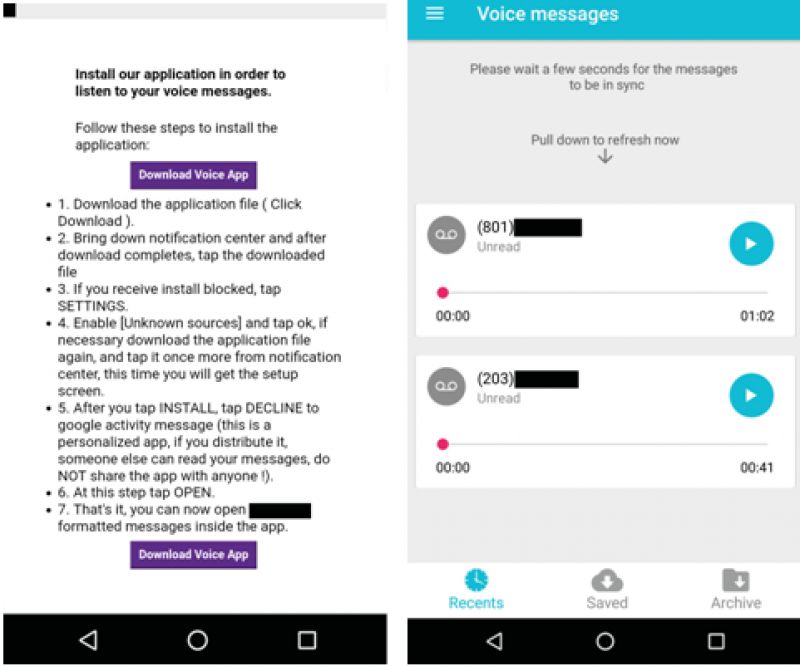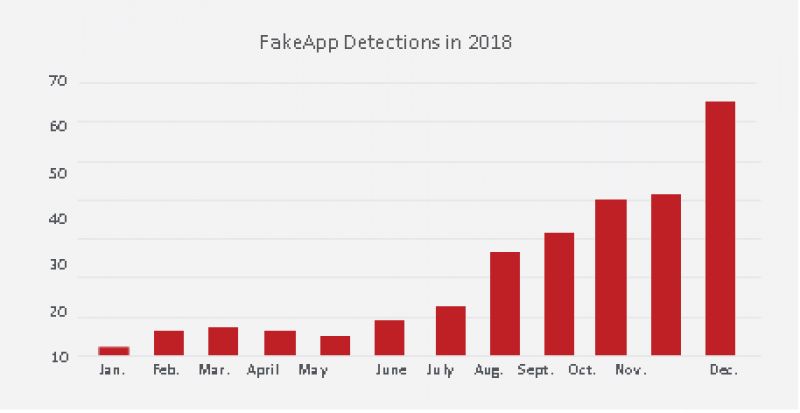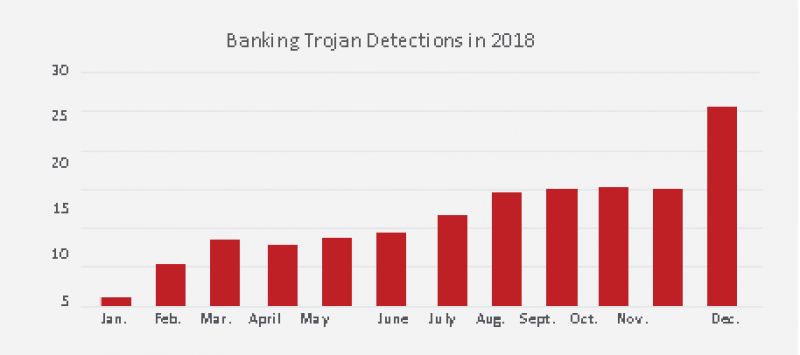Mobile malware continues to increase: McAfee Mobile Threat Report Q1, 2019
The report analyzes the emerging cybersecurity threats in the mobile ecosystem and other connected things in 2018.

As McAfee analyzes the key findings from 2018 their attention turns to the wider ecosystem. The mobile ecosystem is a feature rich environment. Apps offer the ability to control everything from home heating and lighting to real-time remote SCADA and process control capabilities for plant operators. Today’s statistics are reporting the average person having between 60-90 apps installed on their phone.
What does this mean for the mobile threat landscape?
In 2018 McAfee saw a rapid growth in threats against mobile devices and other connected things, in particular during the second half of 2018. The number one threat category was hidden apps which accounted for almost one third of all mobile attacks.
Actions to remove hidden apps from the stores have been timely and effective, but adversaries are innovating and adapting threats just as quickly. In McAfee’s first detailed article they look at the TimpDoor malware family bypass the Google Play store by contacting potential victims via SMS. This approach avoids the threat of being removed from the store, and has proven incredibly effective, impacting more victims than the older Android malware families of Guerrilla and Rootnik combined.
We have to consider the richness of data available to threat actors from a compromised phone. Last year McAfee discussed the rise of nation states targeting individuals via the mobile platform and the past year has seen a continuation of this approach. In 2018 McAfee saw what they believe is the second campaign from a threat group known as the Sun Team. This operation targets North Korean refugees living in South Korea with spyware that attempts to exfiltrate photos, contacts, SMS messages, and other sensitive information. While the number of infections appear low, the impact to victims will likely be significant.
As we continue our march toward an average of over 100 apps on our smartphones the platform remains a key target for ransomware developers, identity thieves, and nation states. It is imperative to maintain diligence before installing any app or following any link. It is also important that they cascade those behaviors to the devices we bring into our businesses and homes.
Going in the Backdoor
With smartphones connected to and controlling multiple items in people’s homes, it was only a matter of time before criminals looked for ways to trick users into letting them inside. Enter TimpDoor, an Android-based malware family that does just that. TimpDoor first appeared in March 2018, and experienced explosive growth in September, becoming the leading mobile backdoor family by more than 2x.
Mobile backdoor threats are not new. DressCode, MilkyDoor, Guerrilla, and Rootnik are all previously detected Android-based malware families that date back to at least 2016. These were typically distributed through the Google Play store as Trojanized apps, hidden inside games or customization tools. Most of these have since been removed from the store, and Google continues its efforts to quickly identify and remove malicious apps.
Bypassing the Store
TimpDoor gets around this by directly communicating with users via SMS and trying to get them to download an app outside of Google Play. Currently targeting North America, the threat begins with text messages informing users that they have voice messages to review. The included link to a voice-player app provides detailed instructions to enable apps from unknown sources. Clicking on the link installs a fake voice-messaging application that displays two messages. None of the buttons or icons work except the ones which play the included audio files.

Hiding in the Background
Since most people will not remember to disable unknown sources after installation, the phone remains vulnerable to other malicious apps. When the user closes the app, it hides the icon but continues running as a background service, making it more difficult to detect and delete. Redirecting all network traffic through an encrypted tunnel to a third-party server hides from most firewalls and other security protections and opens up the home or business network to infiltration and infection.
Evolving Functionality
Earlier versions of TimpDoor use an HTTP proxy to forward web traffic, while the newer version uses a SOCKS proxy that can reroute any network traffic. Establishing the tunnel and keeping it open are currently the only included functions in TimpDoor. The evolving but still basic functionality implies that this attack is still under development. Since cybercriminals are mostly interested in money, the most likely additions to this attack are ad click fraud, distributed denial of service attacks, and sending spam and phishing emails. As they evolve, we expect attacks like this to become stealthier and increasingly targeted at specific devices, companies, or demographics.
Gaining Root Access with the User’s Permission
TimpDoor demonstrates that proxy-based mobile backdoors are becoming more relevant, taking advantage of the always-connected nature of mobile phones. Increased processing power in phones is enabling more sophisticated functionality, such as the socks proxy and network payload encryption. Devices infected with TimpDoor can be used for reconnaissance, as an entry-point to internal networks, to access servers and devices that are air-gapped or otherwise shielded from the open Internet.
The shift away from Google Play as the distribution mechanism is also a significant concern. Tricking users into installing fake apps to listen to fake voice messages is a novel approach. Leveraging popular websites and a convincing social-engineering attack to trick users into enabling unknown sources removes the need for root exploits to gain access to the device.

Faking it on Fortnite
Sixty-million downloads is a target-rich environment for malware. The incredible popularity of the multi-player game Fortnite has led to several fake apps pretending to be various versions of the game, enticing downloads that do not require an invitation code, promised beta releases, and tutorials.
An invitation-only beta version of Fortnite was initially distributed during August 2018 to Samsung devices via the Samsung store. This resulted in a wave of eager users trying to get invitations and others trying to help them. It also encouraged criminals to target these gamers with YouTube ads explaining how to get the app and links to fake apps. Because the game is not available from Google Play, users may not be surprised that they have to enable apps from unknown sources, allow admin access, or give the app other privileges.

Very Convincing Fakes
These fake apps are very convincing, with the same images, music, and loading screens as the legitimate app. After prompting for a log in, the user is asked for mobile verification and then directed to a link with instructions on how to unlock their phone and get the game. However, the install button simply takes them back to the install screen or Google Play store. Thinking that something may have gone wrong during install, many probably try again, driving up the number of downloads and generating revenue for the criminals.
Multi-purpose Malware
When the Fortnite beta was announced in August there was a 3-4x spike in detections of FakeApp, a generalpurpose malware family that can be used for multiple purposes. Most of the deployments of this app seems to be relatively benign to the user, generating revenue through ads and redirects to download other apps. However, some variants have been captured sending SMS messages, downloading apps that hide upon execution, or displaying annoying ads. Other malicious versions act as spyware or cyptocurrency miners.
Popularity Will Encourage Others
The popularity of Fortnite and the decision by Epic Games to distribute outside of Google Play normalizes this distribution method. Even users installing genuine versions of Fortnite will probably not re-reset their settings to block apps from unknown sources, leaving their devices open to other attacks. It is likely that other legitimate organizations will follow Fortnite’s example and partner with manufacturers or other ecosystems to deliver exclusive versions of their app, in the hopes of generating additional buzz. McAfee expects to see continued growth of this attack vector as cybercriminals take advantage of the public’s acceptance of installing Android apps from unknown sources. Since revenue is the current object of most of these criminals, McAfee anticipates increasingly malicious threats and aggressive attacks, including ad click fraud, ad overlays, mobile billing fraud, banking Trojans, and downloading of other malicious apps.

Banking on Trojans
Stealing banking or other financial credentials from mobile devices is also on the rise, as more and more people embrace the convenience of mobile banking and payments. In last year’s 2018 Mobile Threat Report, McAfee noted a 77 percent increase in banking Trojans and predicted that this type of exploitation would continue to grow. Unfortunately, that prediction has come true.
From June to September 2018 McAfee detected a 2x increase in banking Trojans, with the Banker family of malware showing the strongest growth, followed by a further 75 percent spike in December. Often disguised as a legitimate banking application, the malware uses an overlay window to prompt for the user’s credentials.
Bypassing the Store, Part 2
At least part of this growth is due to cybercriminals adapting to security restrictions and finding new ways to bypass Google security. Popups or overlays had been blocked in previous versions of Android but malware authors have found a way to get them working again.
Dynamic Deception
Another technique used to bypass the security checks has the app on Google Play functions as advertised. However, this mock app then dynamically downloads and decrypts the malicious code either after a specified period of time or after the base app has been installed and confirmed to be running on a real device and not in a sandbox. These Trojans could then be distributed via more trusted sources in the ecosystem, making them more difficult to catch. Banking Trojans are also evolving and adding new functionality, such as keylogging and other spyware jobs, expanding their risk profile.
Banking on Extra Security
Banks worldwide are being put in a tough position with these apps. Continued warnings to customers about unexpected popups and overlays asking for sensitive information are essential, as are supplementary authentication techniques. Banks also need to warn their customers about providing apps with additional privileges and service access, as these help the malicious apps further infect the device. Banks may also want to encourage customers to install an additional layer of security software on their devices to aid in detecting fraudulent software and protecting their credentials.

Banks Are Where the Money Is
Android banking trojans will continue to evolve and adapt to bypass security measures inside and outside Google Play. They are a major source of revenue for cybercriminals and they will continue to evolve into more sophisticated threats with broader functionality. Their success in getting onto mobile devices means they will also explore adding additional forms of revenue like ransomware, ad click fraud, and acting as a download conduit for other types of malware.

Operations RedDawn and FoulGoal
Last year McAfee predicted that the number of targeted attacks on mobile devices would increase. Two recent examples are Operation RedDawn, targeting North Korean defectors, and FoulGoal, possibly targeting Israeli FIFA World Cup fans.
More than 30,000 North Korean refugees live in SouthKorea, with 1,000 or more defecting each year. The phones of these refugees are being actively targeted by spyware, which attempts to copy photos, contacts, SMS messages, and other sensitive information and send it to the attackers. RedDawn is the second operation of 2018 that McAfee has identified and linked to a hacking group called the Sun Team, as they attempt to install spyware on the devices of their Korean victims.
So far, the number of successful infections appears to be quite low, around 100 devices This is partly due to active efforts by Google Play and the security industry to quickly identify and remove these apps from the store.
Fake Accounts from Fake Apps
The probable nationality was identified by tracing an exposed IP address to North Korea and finding some Korean words in the logs that are not in the common vocabulary of South Korea. The code is based on publicly available malware, which suggests that the attackers are not technically skilled. Perhaps the most worrisome aspect of this threat is the use of stolen photos and other sensitive data to create fake accounts on various online services, and even steal user’s identities.
Red Card for Football App
The FoulGoal campaign used an app called Golden Cup to install spyware on victims’ devices. This app promised users streams of games from the Russian 2018 FIFA World Cup, as well as a searchable database of previous World Cup records. In addition to stealing the user’s phone number, device details, and installed packages, FoulGoal can download dex .data files from its control server that expands the infection to steal SMS messages, contacts, GPS details, and audio recordings. While this app was downloaded in many countries, the majority of downloads were in the Middle East, after a Twitter post in Hebrew promoted the app.

Voicing your Concerns
“Hey Robot, will my home be hacked today?” “I am sorry Dave, it has already been compromised.”
Over 25 million voice assistants or smart speakers, are already in use. In addition to simple queries, these devices are often connected to other things in the home, controlling lights, thermostats, and door locks, among others. Many of these Internet of Things (IoT) devices are failing at even rudimentary security practices, such as easily guessable passwords, well-known buffer overflow issues, and unpatched vulnerabilities documented on other devices that use the same components. As the voice assistant and smart home market grows rapidly, to as many as 275 million smart speakers over the next 5 years, it will become an increasingly valuable attack vector for cybercrime.
In It for the Money
While a lot of the media coverage on cybersecurity focuses on data theft and privacy breaches, most of the cybercriminal activity is driven by money. From building botnets, to stealing banking credentials, perpetrating click fraud, or threatening property or reputation damage unless a ransom is paid, money is the goal. The rapid growth and broad access of voice assistants and their connected IoT networks make them a prime target.
You Never Know Who Might Be Listening
The attack surface of a typical home with a voice assistant is quite broad. Hackers could get access to the listening stream or microphone and monitor everything said in its vicinity. Smart speakers could be commanded to perform actions by some other device with a speaker, such as embedding commands in a TV program or Internet video. Customized actions could be modified, altering one of your automated tasks into something that performs additional steps to benefit the criminal.
Another Way In
However, the bigger vulnerability comes from associated IoT devices, such as smart plugs, door locks, cameras, or connected appliances, which have their own set of quirks and vulnerabilities and could provide unfettered access to the rest of the home network. Network segmentation, or grouping devices on separate IP subnets, is a common corporate IT practice that is slowly moving into the home network in an effort to reduce the overall vulnerability of the home to these types of attacks. Tools that enable network segmentation in the home are becoming easier to find and use.
The Up and Down of Mobile Cryptomining
The popularity of digital currencies has attracted criminals looking to find ways to add value to their digital wallets without the cost of doing their own mining.
With the cost of cryptomining machines upwards of $5,000, hackers are using malicious code to use your devices to add blockchain entries to cryptocurrencies. The popularity of Android-based devices not only makes them a prime target, but the latest technique can jump from phone to table to smart TV to infect your entire environment. Some of these malicious apps, such as ADB Miner, are spreading through a publicly accessible port via the Android Debug Bridge (ADB).
Whole Lot of Mining Going On
The number of cryptomining mobile apps has grown substantially in the last year. Cybersecurity researchers found more than 600 malicious cryptocurrency apps, spread across 20 different app stores. While mobile app store companies are actively working to identify and remove these apps, they do not necessarily notify users who downloaded them before they were removed.
Cracking the Case (of Your Phone)
Malicious cryptomining apps can do far more harm than just use your processor. Some of them consume so much processing capacity that they are causing batteries to swell enough to crack the back cover, or making the processor overheat and implode. In June 2018, Apple took the additional step of changing its developer guidelines to ban mining apps completely on its devices, including apps which drain the battery, generate excessive heat, or otherwise put excessive strain on the device. Google enacted a similar ban for Google Play apps shortly after.
Dropping in Value
As we move into 2019, mobile cryptomining appears to be declining. This could be due to the drop in value of many cryptocurrencies, to the point that mobile coin mining is no longer as profitable. As a result, these attackers may switch to various forms of mobile ransomware as a more reliable revenue source.

Everything is vulnerable to some type of malicious exploit.
If 2018 was the year of mobile malware, 2019 is the year of everywhere malware. Detections of backdoors, cryptomining, fake apps, and banking Trojans all increased substantially in the latter half of the year. Attacks on other connected things around the house gained momentum as well. While hidden apps and Adware remain by far the most common form of mobile threats in Android, the others are growing and learning how to infect other types of devices as well.
Criminals Go Where the Money is Easiest
One common thread through much of the mobile attack landscape is the quest for illicit profits. Criminals are looking for ways to maximize their income, and shift tactics in response to changes in the market. As the value of cryptocurrencies drops, they shift away from cryptomining. App stores get better at finding and deleting malicious apps, so they bypass the stores and go direct to consumers. Some services have been slower to crack down on fake ad clicks, leaving themselves open to continued click fraud.

Finding the Weakest Link
Connected things in the home and workplace will continue to be of interest as weak to non-existent security controls from manufacturers and lack of implementing even the simplest of evasion techniques such as changing the default user name and password make them particularly interesting targets.
Someone is Always Watching
The other primary thread McAfee identified in their research is the focus on surveillance. Whether this is nation states looking to gain valuable national or corporate intelligence, companies looking to collect and monetize behavioral data, or disruptors trying to influence social or political behavior, many apps are gathering data on mobile users beyond their consent. In addition to repeated communications to consumers to be vigilant about what they download to their devices, McAfee expects to see an increase in political discussion about potential regulations aimed at protecting consumer privacy and penalizing corporate offenders.

